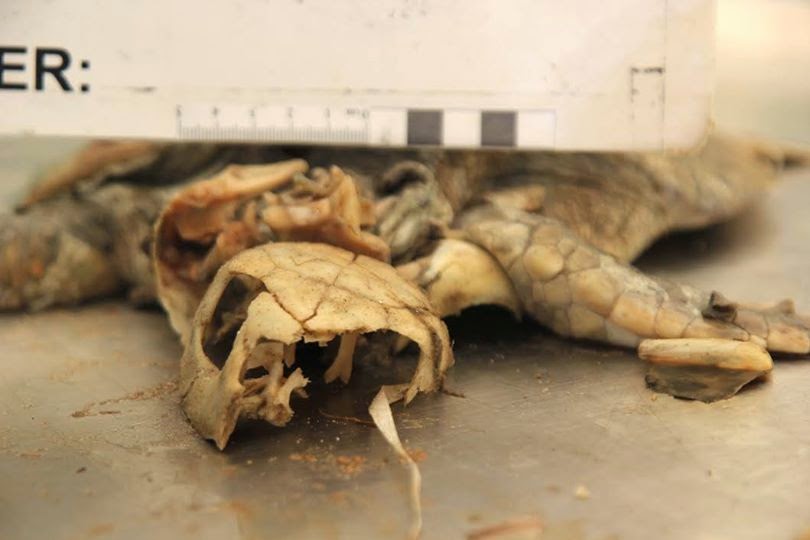 |
| Photo by USFWS Northeast Region facebook page |
The photos were posted on the USFWS Northeast Region facebook page with these comments: "Virginia Aquarium & Marine Science Center conducted a necropsy on the critically endangered Kemp’s ridley sea turtle found at Eastern Shore of VA and Fisherman Island NWR last week."
 |
| Photo by USFWS Northeast Region facebook page |
 |
| Photo by USFWS Northeast Region facebook page |
Mass balloon releases kill!
Even one balloon release can kill.
Instead of a balloon release, consider these environmentally-friendly alternatives to balloon release from Balloons Blow - Don't Let Them Go
From the USFWS Northeast Region facebook page. The mission of the U.S. Fish and Wildlife Service is working with others to conserve, protect, and enhance fish, wildlife, plants, and their habitats for the continuing benefit of the American people.The northeast region of the U.S. includes Maine, New Hampshire, Vermont, Massachusetts, New York, Connecticut, Rhode Island, New Jersey, Pennsylvania, Delaware, Maryland, Virginia and West Virginia.
Related links
- Help stop mass balloon release on 15 Jun at the Marina Barrage
- NTU club pops plan to release balloons David Ee The Straits Times AsiaOne 27 May 14;
- Help stop mass balloon release at Punggol on 31 Dec 2013
- Do balloon releases kill marine life?
- Balloons and soft plastic kill sea turtles, slowly and painfully
- Discarded balloons can kill sea turtles
- 1,300 balloons released at Sentosa
- Abandoned balloons seen in Woodlands mangroves
- Documented reports of death by balloon
- Reactions to mass balloon release
- Mass balloon release kills
- Why balloons by the sea is heart-breaking
- More posts about marine litter
